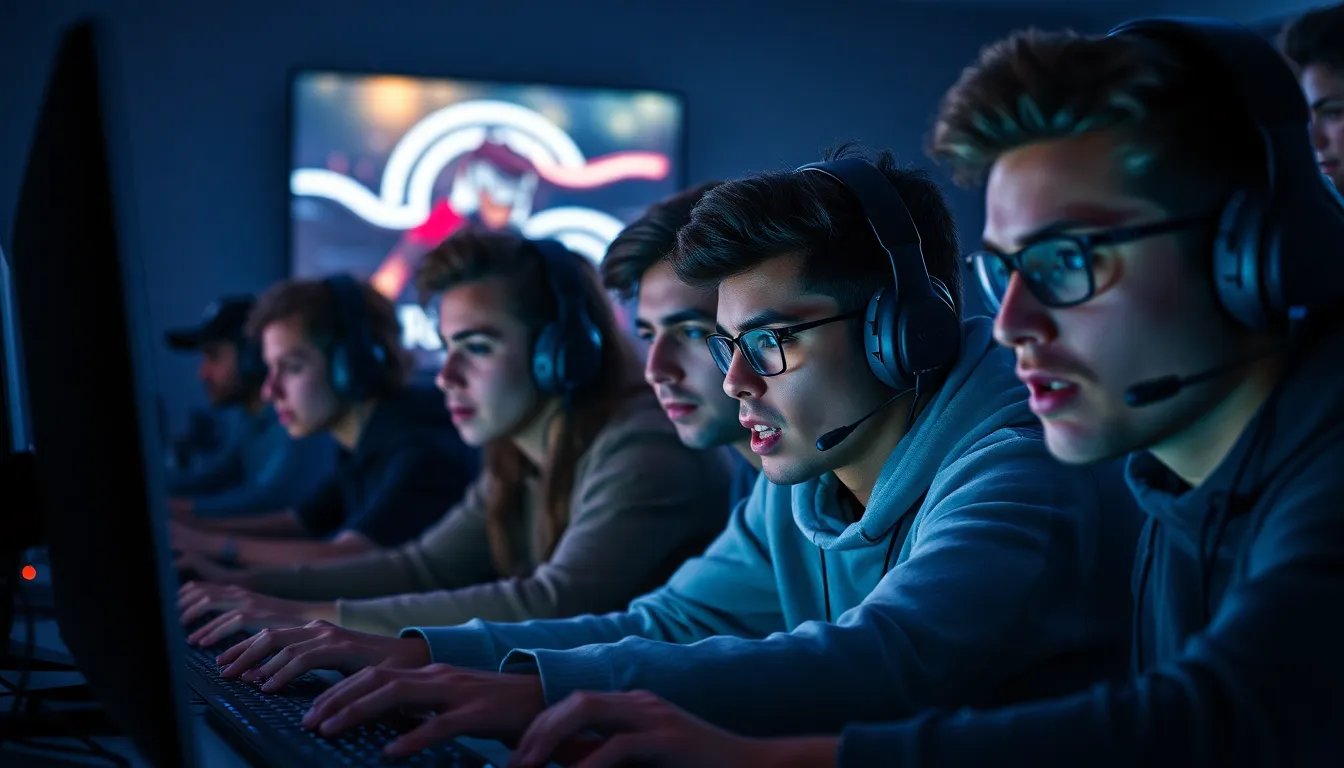Table of Contents
ToggleIn the world of online gaming, few topics ignite as much passion as the ping advantage debate. Gamers everywhere have argued over whether a few milliseconds can make or break a match. It’s like arguing whether pineapple belongs on pizza—everyone’s got an opinion, and the stakes feel just as high.
Overview of Ping Advantage Debates
Ping advantage debates stem from the variability in internet connection latency among players. Players often argue that even minor ping differences can sway competitive outcomes in online gaming. Lower ping typically yields faster responses while higher ping introduces delays, creating an uneven playing field.
Certain gamers firmly believe that this discrepancy can determine victory or defeat in crucial matches. Competitive integrity remains a focal point, prompting discussions on whether ping variations create unfair advantages.
Numerous examples illustrate the ongoing tension. In first-person shooter games, for instance, a player with a ping of 30 milliseconds might react faster than an opponent with 150 milliseconds. Community forums frequently showcase opinions about how these disparities impact gameplay.
Evidence highlights that many players seek equal conditions. Game developers often implement measures to minimize these differences, such as dedicated servers located strategically worldwide. Still, players debate the effectiveness of these solutions.
Official tournament rules sometimes address ping advantages, emphasizing the need for fairness in matches. Many esports tournaments employ specific settings to ensure competitive balance. Such regulations often specify maximum ping limits to create a level playing field.
Through these discussions, the impact of ping on overall player performance becomes increasingly apparent. The conversation continues as communities strive to find solutions and reach consensus on this crucial aspect of competitive gaming.
Key Arguments in Favor of Ping Advantage


Ping advantage plays a significant role in shaping competitive gameplay dynamics. Many gamers assert that lower ping leads to smoother interactions and heightened responsiveness.
Enhanced Gameplay Experience
Enhanced gameplay relies heavily on latency. Players with lower ping experience quicker movements, allowing for more precise aiming and better reactions. Quick response times lead to a more satisfying gaming experience. Game fluidity improves with reduced lag, fostering a more enjoyable environment. Engagement with the game increases as players feel more in control, which translates to higher satisfaction levels. Low ping connects players better with in-game elements, creating a seamless flow that elevates overall performance.
Competitive Fairness
Competitive fairness hinges on equal playing conditions. Players facing lower latency enjoy advantages that affect match outcomes directly. Establishing a level playing field becomes essential to ensure fair competition. In eSports, many tournaments implement strict rules regarding maximum ping limits to maintain balance. Such regulations help minimize disparities, ensuring all participants compete under similar conditions. By recognizing the impact of ping on player performance, organizers can improve fairness and integrity within competitive matchups. Opting for dedicated servers reduces ping variations, promoting a more equitable competitive landscape.
Counterarguments Against Ping Advantage
Debates over ping advantage often face strong counterarguments highlighting technical difficulties and the impact on player skill.
Technical Challenges
Monitoring ping introduces complex technical issues. Variable network conditions can result in fluctuating latency, affecting player experience and match integrity. Different players may use internet services with varying reliability, creating additional disparities not solely linked to ping. Connection stability often varies across regions, which may skew perceptions of advantage. Moreover, measuring and enforcing ping limits requires significant resources, often leading to unequal enforcement in tournaments. Game developers struggle to find the balance between performance and fairness. Implementing improvements for all players becomes a priority, but technical limitations frequently hinder ideal solutions.
Impact on Player Skill
Player skill remains a critical aspect of competitive gaming, often overshadowed by discussions of ping. Many argue that highly skilled players can overcome latency issues, making ping less crucial than personal talent. Experience in adapting to different latency levels plays a significant role in a player’s ability to perform well under varying conditions. Some argue relying solely on ping may diminish the celebration of exceptional gameplay and strategy. Competitive environments thrive on highlighting talent, with skill often proving more pivotal than minor differences in response times. A player’s ability to read opponents and make split-second decisions frequently defines match outcomes, regardless of ping differences.
Case Studies and Examples
Numerous case studies illustrate the significance of ping advantage in competitive gaming. For instance, in the 2019 ESL Pro League, players with an average ping of 20 milliseconds consistently outperformed those experiencing 80 milliseconds. This disparity in response times highlighted how lower latency can lead to critical in-game advantages.
Another example from the popular game Call of Duty: Warzone demonstrates this concept clearly. A player with a ping of 40 milliseconds frequently reported quicker reactions compared to teammates with pings of 150 milliseconds, often securing first shots in crucial firefights. Such examples are common in community forums where players share experiences, reinforcing perceptions about the impact of latency on gameplay.
In tournaments like the Overwatch League, organizers implement strict ping limits, typically set at 30 milliseconds, to ensure balanced competition. Many teams advocate for these rules, emphasizing that maintaining low latency can sway outcomes during high-stakes matches. This practice supports fairness, as all competitors face similar conditions.
Diverse opinions exist within the gaming community regarding the relevance of skilled play versus ping. Highly skilled players often argue they can adapt to varying latencies. They believe that focusing solely on ping may overlook key aspects of gameplay, such as strategy and critical decision-making skills.
However, community discussions reveal differing perspectives on the importance of monitoring ping. Technical challenges arise when ensuring equitable play environments, as players may experience fluctuating network conditions. Such inconsistencies can affect overall match integrity, often complicating the enforcement of ping regulations in tournaments.
Conclusion
The ping advantage debate remains a contentious topic in the gaming community. As players continue to navigate the complexities of latency and its impact on competitive outcomes, the discussions reveal a deeper concern for fairness and integrity in esports. While some argue that skill can overcome latency issues, the evidence suggests that ping differences can significantly influence match performance.
Game developers and tournament organizers strive to implement measures that promote balance, yet challenges persist in ensuring equitable play. As technology evolves and the competitive landscape shifts, finding common ground on the importance of ping will be crucial for fostering a fair environment that values both skill and performance.







